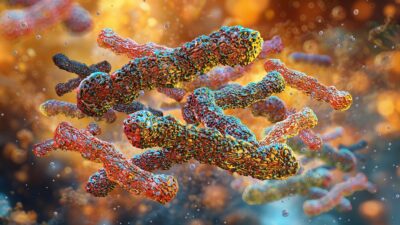Predicting Future Frailty with an Epigenetic Clock
- The pace of aging seems to be linked to the pace of frailty.

An accepted manuscript in the Journals of Gerontology has described how a third-generation epigenetic clock is a predictor of future frailty.
Are epigenetic and physiological metrics connected?
This paper begins with an examination of two different methods of measuring aging processes. The first is the well-known epigenetic clocks, and this paper lists several, including the first-generation Horvath and Hannum clocks, the second-generation PhenoAge and GrimAge, and the third-generation DunedinPACE, which is built to estimate how rapidly someone is biologically aging.
On the other hand, frailty refers to physiological changes, and these researchers define it as “a state of increased vulnerability to stressors due to multisystem decline”. The frailty index is used to measure the total weakness of systems and organs [1], providing a physical biomarker for overall aging.
Previous studies have reported mixed results on their correlation. Cross-sectional studies involving first- and second-generation clocks have found that there is one [2], which has been corroborated by some longitudinal studies [3]. However, other longitudinal studies have found that there is no correlation between epigenetic age and a greater risk of frailty later in the study [4].
To shed further light on the subject, these researchers decided to use a twin study based on the Swedish Adoption/Twin Study of Aging (SATSA), which uses data from Swedish twins gathered every three years from 1984 to 2014 [5]. Data from a total of 524 people was used for this analysis.
 Novos Labs uses DunedinPACE for its epigenetic tests.
Novos Labs uses DunedinPACE for its epigenetic tests.
Only one clock predicted future frailty
For reliability, this study used the principal components of several first- and second-generation clocks along with DunedinPACE. The frailty index was already calculated as part of SATSA, which had pioneered its construction with 42 physical parameters. This study used data from 50- to 90-year-olds, with the appropriate data being placed in two-year bins for modeling.
Importantly, while epigenetic clocks, including the acceleration-measuring DunedinPACE, have largely linear correlations with chronological age, the frailty index does not. It has a slight upward curve instead: the older a person is, the faster that person is likely to become more frail. However, it is highly variable, and some frailty is temporary.
The four first-generation clocks and the frailty index appeared to be directly correlated at the 50-year baseline: at that chronological age, people with older epigenetic ages had more frailty. However, the researchers did not observe any causal or temporal connections between the two: those epigenetic clocks could not predict future frailty, nor vice versa.
On the other hand, DunedinPACE was slightly predictive of future frailty, although not the other way around. The researchers note that DunedinPACE is built from biomarkers that are associated with frailty [6]. Therefore, they surmise that this clock may be acting as an early warning system: the same biological changes causing a rise in DunedinPACE appear to be causing accelerated frailty as well.
However, they also note that this study had limited power and was not built with a particularly large dataset. The precise epigenetic components that could more strongly suggest a causal relationship were also not investigated. Further work will need to be done to see if systemic frailty can be more precisely predicted at the epigenetic level.
Literature
[1] Howlett, S. E., Rutenberg, A. D., & Rockwood, K. (2021). The degree of frailty as a translational measure of health in aging. Nature Aging, 1(8), 651-665.
[2] Gale, C. R., Marioni, R. E., Harris, S. E., Starr, J. M., & Deary, I. J. (2018). DNA methylation and the epigenetic clock in relation to physical frailty in older people: the Lothian Birth Cohort 1936. Clinical epigenetics, 10(1), 1-8.
[3] Verschoor, C. P., Lin, D. T., Kobor, M. S., Mian, O., Ma, J., Pare, G., & Ybazeta, G. (2021). Epigenetic age is associated with baseline and 3-year change in frailty in the Canadian Longitudinal Study on Aging. Clinical epigenetics, 13, 1-10.
[4] Vetter, V. M., Kalies, C. H., Sommerer, Y., Spira, D., Drewelies, J., Regitz-Zagrosek, V., … & Demuth, I. (2022). Relationship between 5 epigenetic clocks, telomere length, and functional capacity assessed in older adults: cross-sectional and longitudinal analyses. The Journals of Gerontology: Series A, 77(9), 1724-1733.
[5] Finkel, D., & Pedersen, N. L. (2004). Processing speed and longitudinal trajectories of change for cognitive abilities: The Swedish Adoption/Twin Study of Aging. Aging Neuropsychology and Cognition, 11(2-3), 325-345.
[6] Mak, J. K., Kananen, L., Qin, C., Kuja-Halkola, R., Tang, B., Lin, J., … & Jylhävä, J. (2023). Unraveling the metabolic underpinnings of frailty using multicohort observational and Mendelian randomization analyses. Aging Cell, e13868.







